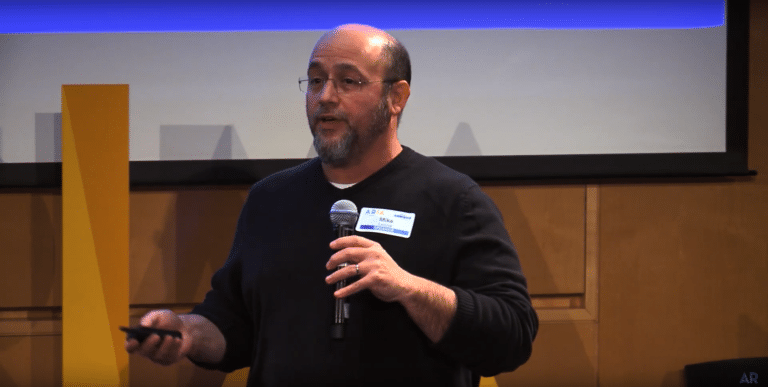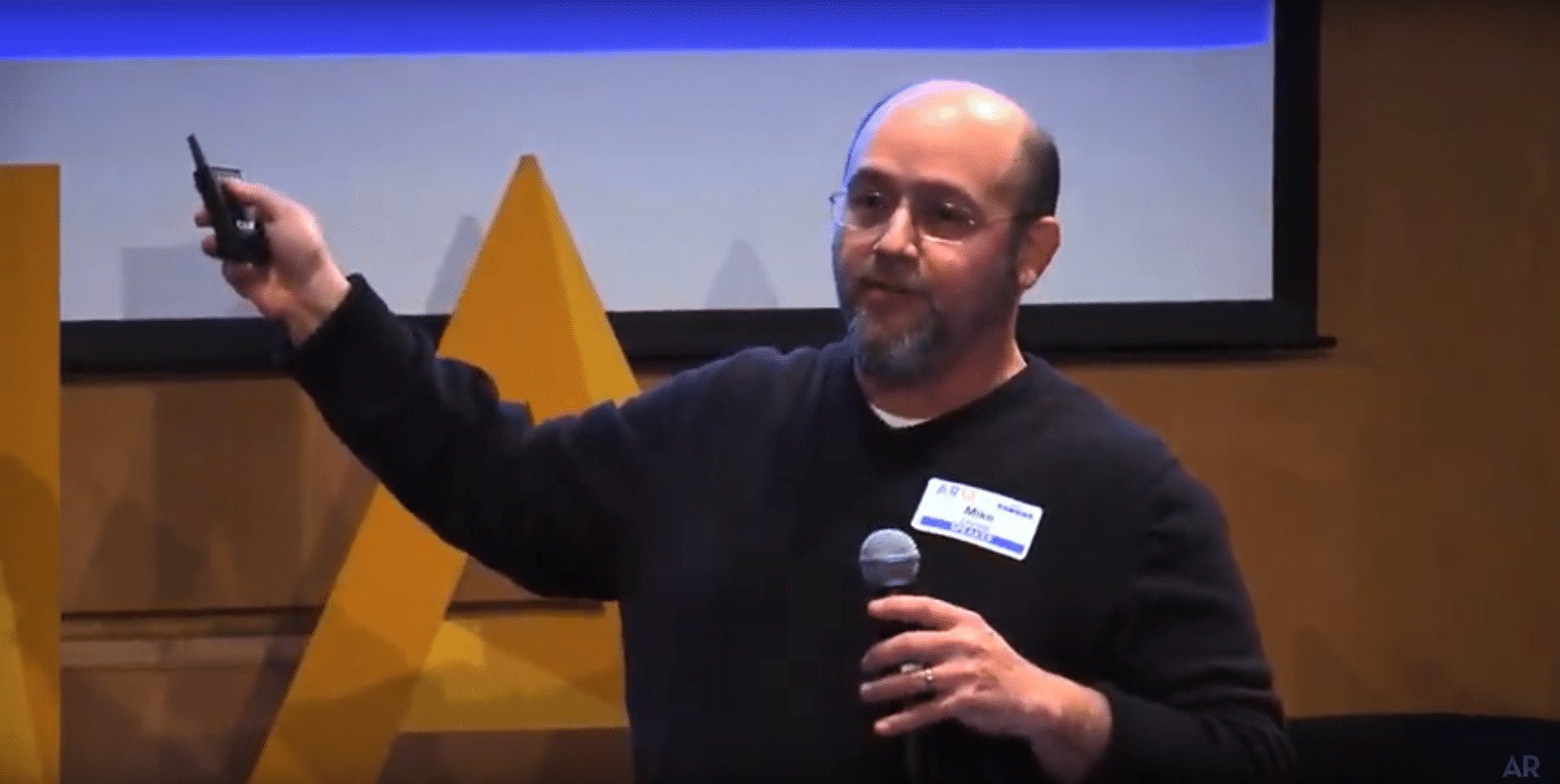
XR Talks is a series that features the best presentations and educational videos from the XR universe. It includes embedded video, as well as narrative analysis and top takeaways. Speakers’ opinions are their own.
There’s a fair amount of cheerleading in AR. Sometimes we’re probably guilty of that. This makes healthy skepticism more valuable, and also the right attitude for this stage of AR’s lifespan. On the skeptical, yet still healthy, end of that spectrum is Happy Giant CEO Mike Levine.
Speaking at the recent ARiA show (video below), he warns against spending too much time in the industry “bubble.” Though it’s a great place to learn best practices and commiserate, balanced perspective requires departing occasionally to talk to everyday folks (e.g my parents).
“As you get into AR you have to be careful because you will get sucked into that bubble,” said Levine about dealing with clients outside the bubble. “When you explain it to people in the outside world who’ve only played Pokemon Go, you kind of have to boil it down to main feature points,”
And he should know. Happy Giant is one of the few revenue-generating companies in AR. As an AR game studio, it works with brands on apps and tie-ins to toys, such as the Kapi award-winning Untamed Battle ARena. So Levine gets lots of face time with non-AR people, like toy companies.
Another intra-industry practice that needs a reality check is AR demos. As we’ve examined, there’s not enough disclosure in AR demos about what’s “concept video” versus live product. This is rampant with AR navigation, such as Blippar’s AR City and Google’s initial VPS unveilings.
In tests with AR navigation, such as wayfinding overlays that lead users along a guided path, Levine and team have uncovered lots of challenges. Besides arm strain, there are realities like dodging people. And small controlled areas work well, but city or world-scale AR is a lot harder.
“We’ve been spending a lot of time in downtown Boston using different AR cloud computer vision technologies,” said Levine, voicing over a first-person view of AR navigation. “This also shows you the real-world realities of AR tourism: there’s a lot of people out there, and things get in your way.”

Another lesson from the trenches is one of our favorite topics: designing for repeat use. Given that AR is a snack (VR is a meal), short sessions should be counterbalanced by frequency. That’s mostly inherent in the use case (e.g. utilities), but can also be boosted through gamification.
“We used model recognition on the toys so kids can actually physically scan and unlock them in the game,” Levine said of Untamed Battle ARena. “And we actually built it into the play package and encouraged them to scan their toys every single day to get different rewards in the game.”
With a focus on gaming and toy tie-ins, a natural extension is education and curriculum-based content. And as it goes down that road, it’s learning a lot. For example, Levine invokes the Ben Franklin quote: “Tell me and I forget; teach me and I may remember; Involve me and I’ll learn.”
This speaks to AR’s overall benefits in learning (education and enterprise alike), applied by Happy Giant in an upcoming Romeo & Juliet app. Scrolling prose is augmented by plot animations and even clickable buttons to activate deeper information and references: a sort of AR hyperlink.
“Kids can basically move around the experience… certain lines are actually highlighted and we created this thing called a ‘Shakespeare-o-pedia’,” said Levine. “So as kids are immersing themselves in this, they’re learning and they’re collecting data. It’s all curriculum based,”

As for next steps, Happy Giant is moving towards a platform approach, given that it built most of its tech in house. Sort of like the AR as a Service model we’ve examined around Niantic’s Real World Platform, tech for a company’s own use can be spun out for other opportunities.
And as hinted above, development chops in AR learning apps can apply to the enterprise. That includes training and other key AR-assisted job functions. This also creates an even stronger revenue play for Happy Giant, given the near-term monetization opportunities in enterprise AR.
“All the stuff I’ve just shown you is more complex than a lot of the stuff going on in enterprise and other areas,” said Levine. “So we’re taking our skill sets and platform and starting to apply it to new areas such as instructions, product visualization learning directions, and warehouses.”
Going full circle, this is all about gaining perspective by exposing oneself to the world outside the AR bubble. That means talking to end users and the brands proposed to be revenue sources for AR in the coming years. As we like to say, solve human problems, not engineering ones.
“If you’re a developer, you have to create, experiment and innovate,” said Levine. “Demo to real people… explore utilitarian use cases that give people and companies efficiencies and that work in life, because that’s really the key in my opinion to what this whole movement is all about.”
For deeper XR data and intelligence, join ARtillery PRO and subscribe to the free AR Insider Weekly newsletter.
Disclosure: AR Insider has no financial stake in the companies mentioned in this post, nor received payment for its production. Disclosure and ethics policy can be seen here.
Header image credit: AR in Action, YouTube
